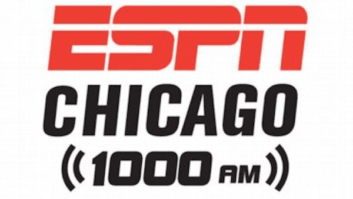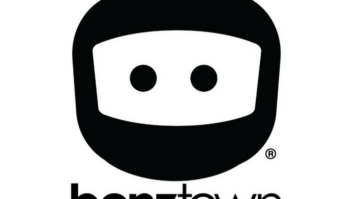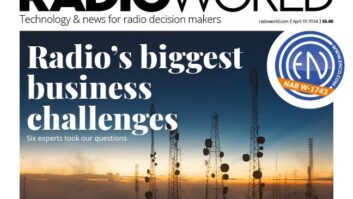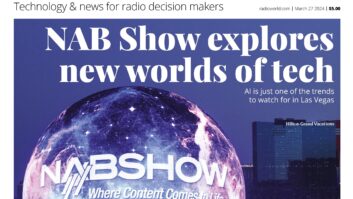I shared thoughts last issue from Rick Ducey of BIA about where the industry is headed.
I also recently queried Garrison C. Cavell, president of Cavell, Mertz & Associates Inc. for his perspectives as a technical consultant.
McLane: How would you describe the near-term radio business outlook?
Cavell: Improving, because of three factors: the beginnings of signs of consumer optimism; the upcoming holiday season and pent-up demand; and a resurgence of a return to localism, which seems to be generating more dollars for the top line.
McLane: How has your business changed of late?
Cavell: We have seen the beginnings of a turnaround. We are seeing movement from a “hunker down” mindset to one of “improvement in place,” where broadcasters are looking (cautiously) toward stabilizing or upgrading their infrastructure.
In particular, we are seeing lots of interest in the AM side in the areas of facility “operational cost containment” changes and moment method proofs.
McLane: What are radio organizations doing to forge ahead with new media and new technology?
Cavell: Perhaps not as much as they should given the understandable need to weather the recession, but there are signs of evolution nonetheless.
In particular, we are seeing more infrastructure upgrades (studio and IT broadcast solutions), which in turn are being used to support local innovation in station Web site development and the companion use of social networking mechanisms.
The execution requires ongoing, intensive staff support, but properly done, you reintegrate the community with the station, driving listeners to the main channel as well as to companion podcast, streaming and HD channels.
The hurdle is creating a tangible payback for the station, but I’ve seen it happen, and particularly when the “bundled” station offerings create a “destination” for the community again.
Some particularly successful sites have a strong basis in local news, often outgunning (and out-billing) local newspapers.
McLane: How is the industry doing at getting itself onto new platforms and devices?
Cavell: My personal feeling is that we are doing poorly — for reasons of content and quality.
In the view of the alternative platform/device providers, what is their motivation — the business model — for including the traditional broadcasters in their systems? They seem to not see a value in our program offerings, and in many cases, our audiences would agree.
Monitor your own (or your teenager’s) entertainment choices and tell me what you see. The content isn’t making them want to listen to us anymore. My own sons apologize to me about this when they sample the radio, groan and switch it off for some other means. All I can do is grizzle — but frankly, they have a point.
Regarding quality, the general public is clearly developing a new appreciation for quality and alternatives. But sadly, I feel that radio is often making the same “quality mistakes” with HD Radio that have driven audience numbers from analog FM.
When the technology is called “HD,” people truly anticipate vast improvements in what they’ll hear. The wise stations understand this fact and use significantly relaxed processing on their HD channels. However, many stations broadcast HD with the same aggressive processing used on their analog channel.
This processing often sounds bad on FM but, due to the low bit rates, can sound truly horrible on HD platforms and other digital devices. The radio industry has an opportunity to expand its reach, but I am concerned that we are squandering it.
McLane: Have you and your clients engaged in recent projects to help stations improve coverage, add channels or otherwise extend their brand?
Cavell: Most stations seem to be postponing any expensive improvement and upgrade plans because of the economy; however this hesitance may offer opportunity for the more aggressive operators. Many are using this time to “shore up” weaknesses in their coverage using methods such as pursuing FM translators for their AM stations.
The more interesting “new trend” for us is the situation where stations that have experienced major problems (fires, tower collapses and the like) use this “inflection point” to reconsider the weaknesses in their operations and think about “smart consolidation,” coverage expansion or “fill-in” opportunities. It’s often easier to rethink options when everything is laying on the ground and you have to rebuild something anyway.
McLane: Are there technology solutions in the existing spectrum that can best help radio? Which new media platforms are most important?
Cavell: I think that technology solutions for the existing spectrum will be hamstrung by the large installed receiver base, broadcaster inertia and financial constraints.
Until we can arrive at an acceptable political means of forcing a wholesale change into new technologies, our share of the entertainment pie may continue to erode.
I also feel it’s about evolution. The old radio entertainment networks were eventually supplanted by the new technology called television — the radio programming model had to change, and it did, and radio became/remained viable using (mostly) music programming and portability. Then FM radio essentially supplanted AM and we all see how that has, and still is, changing. In television, cable/satellite is outgunning the traditional television broadcast models.
You can go to many Web sites and buy “Internet radios” that either plug into a wired network or use Wi-Fi. And car radios are starting to have Wi-Fi capability, and of course satellite and MP3 spigots. Even my cell phone (which is not an iPhone) has streaming radio stations available.
So it really is time to reconsider our strengths as program, information and entertainment providers — rethink how and what we provide (program slugs, mini broadcasts, on-demand), and reconsider the means for getting it to the public.
Until the regulatory structure reacts with more or different spectrum and permitted technologies, our best hope is to creatively program our analog over-the-air streams; embrace HD Radio’s advantages (and promote it); creatively use streaming approaches; develop “destination Web sites” and podcasts; and seize any opportunity to hitch a ride on other entertainment platforms.
We as an industry have adapted in the past. The creative programmers and engineers, if allowed to do what they do best, can take us successfully into the future.
McLane: What other questions should we be asking right now?
Cavell: We are increasingly seeing more and more engineering, sales and programming talent leave our industry. The skill sets are leaving, and those with “fire in their bellies” and creativity are leaving. How do we exist, how can we grow as an industry with so many losses? Who is the next generation of programmers and engineers? Where will they come from?
I was sitting at a transmitter site recently in a major market with several high-level engineering folks (local and regional types). All, including myself, were greyer than they care to admit — and we all wondered: Who can we pass our knowledge on to? Yes, there are many IT-based solutions out there, but much of what we do, the transmission side, the street smarts side of remotes and on-scene broadcasting, the live broadcasts … much of that wisdom and knowledge is fading. Is this important? Does it matter? Should we even care?












